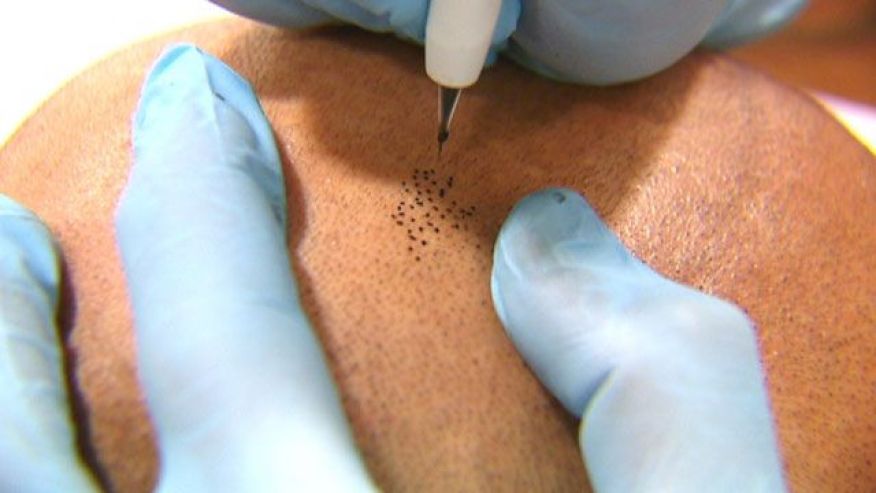![[A woman carrying a bag of vegetables]](https://cdn1.medicalnewstoday.com/content/images/articles/307/307256/a-woman-carrying-a-bag-of-vegetables.jpg)
Cutting the price of fruits, vegetables and grains while increasing the price of sugary drinks could avert more than half a million deaths over the next 20 years, say researchers.
Cardiovascular disease (CVD) is a term used to describe conditions that affect the heart or blood vessels, including heart disease, stroke, heart attack and heart failure.
Heart disease is the leading cause of death for both men and women in the US, responsible for around 610,000 deaths every year.
A healthy diet is considered a key factor for a healthy heart; eating foods that are low in saturated fats, trans fats and cholesterol and high in fiber can reduce the risk for heart disease and other CVDs.
Adhering to a healthy diet is also key to preventing obesity – a major risk factor for CVD. However, obesity remains a public health concern in the US, affecting more than a third of American adults.
Previous studies have suggested that when it comes to healthy eating, affordability of fruits and vegetables is a key barrier, particularly for low-income households. As such, many people opt for cheaper, unhealthier foods.
For this latest study, researchers from Tufts University and Harvard Medical School – both in Boston, MA – set out to investigate whether lowering the price of fruits, vegetables and grains, while increasing the price of sugary drinks – considered a key contributor to obesity – may influence CVD rates over time.
Price changes could avert 515,000 CVD deaths in 20 years
To reach their findings, the researchers used a computer model to estimate how lowering the price of fruits, vegetables and grains by 10% would affect eating habits and rates of CVD in the US by 2035.
Fast facts about CVD
- Around 84 million people in the US have some form of CVD
- Around 1 in 3 deaths in the US are due to CVD
- CVD causes more deaths than cancer, chronic lower respiratory diseases and accidents combined.
They also used the model to estimate how raising the price of sugary drinks by 10% might impact CVD rates in the US over the next 20 years.
Overall, the researchers found that the price changes combined would prevent around 515,000 deaths from CVD in the US by 2035, as well as prevent 675,000 CVD events, including heart attack and stroke.
A 10% reduction in the price of fruits and vegetables alone could reduce deaths from CVD by 1.2% within 5 years, according to the team, and by almost 2% within 20 years. It could also lead to a 2.6% fall in heart attacks and a 4% fall in strokes within 20 years.
Within 5 years of a 10% reduction in the price of grains, deaths from CVD could fall by 0.2%, while a 0.3% reduction in CVD deaths could be achieved within 20 years. Heart attacks could fall by 0.83% within 5 years of this price reduction and by 0.77% within 20 years.
When it comes to sugary drinks, raising the price by 10% could lower deaths from CVD by almost 0.1% within 5 years and by 0.12% within 20 years. This price reduction could also achieve a 0.2% fall in diabetes rates within 5 years and a 0.7% fall within 20 years, as well as a fall of 0.25% in heart attacks at both time points and a 0.17% fall in strokes within 20 years.
Small dietary changes ‘could prevent 3.5 million CVD deaths in 2 years’
The researchers say their findings indicate that these small price changes could have a significant impact on public health by encouraging consumption of healthy foods.
They note that if each person added 100 g of fruit, 100 g of vegetables and 50 g of whole grains to their diet each day, as well as cutting out one 8-oz sugary drink, up to 3.5 million CVD deaths and 4 million cardiovascular events could be avoided in just 2 years.
“A change in your diet can be challenging, but if achieved through personal choice or changes in the market place, it can have a profound effect on your cardiovascular health,” notes lead author Dr. Thomas A. Gaziano, of Brigham and Women’s Hospital and Harvard T.H. Chan School of Public Health.
Senior author Dr. Dariush Mozaffarian, of the Friedman School of Nutrition Science and Policy at Tufts, adds:
“These novel findings support the need to combine modest taxes and subsidies to better represent the real costs of food to health and society.”
Price reductions ‘more effective than mass media campaigns’
Dr. Gaziano and colleagues also presented the results of another study at the Scientific Sessions, in which they suggest that reductions in the price of fruits and vegetables in the US may be more effective than mass media campaigns for reducing cardiovascular-related deaths.
For this study, the team used a computer model to estimate how a 10% or 30% price reduction in fruits and vegetables in the US would impact death rates from heart disease, stroke and overall CVD by 2030.
They found that the price reduction could reduce the risk of death from heart disease and stroke by about 1% over the next 15 years, saving approximately 64,000-69,000 lives. A 30% price reduction would be even more effective, according to the team, reducing the death rate from heart disease and stroke by around 3%, saving around 191,000-205,000 lives by 2030.
In comparison, a 1-year mass media campaign promoting the health benefits of fruits and vegetables would reduce death rates from CVD by around 0.3% by 2030, according to the team, saving around 22,000-24,800 lives.
“Strategies that increase the awareness, availability and affordability of healthy foods such as fruits and vegetables should be harnessed and adopted by the US,” says Dr. Mozaffarian. “Further, policies aimed at subsidizing fruits and vegetables could have more equitable effects upon health across race and ethnic groups. And crucially, this can be achieved quickly.”
Earlier this year, Medical News Today reported on a study that revealed a 12% fall in sales of sugary drinks in Mexico, following the introduction of 10% tax on the beverages.
[Source:- Medicalnewstoday]



















